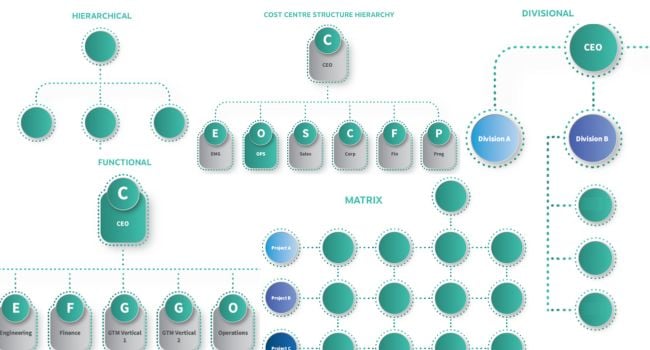The way a company structures its workforce is crucial to its success. Workforce structures determine how employees are organised, how work is delegated, and how communication flows throughout the organisation.
Workforce structures refer to the way a company organises its employees, financial responsibilities, and the relationships among them. It provides a framework for managing and coordinating work activities. There are several types of enterprise structures and your organisation uses several of them, so let’s talk through different ones and see how you can visualise them.
Types of workforce structures
Most workforce structures can best be displayed as an org chart. An organisational chart, or org chart, is an essential tool for any enterprise structure as it provides a clear and concise visual representation of the hierarchy, roles, and relationships among employees. It enables employees to understand where they fit into the organisation and how their role contributes to the overall goals of the company.
Functional

One of the most common structures in business today, a functional organisational structure groups employees according to the functions they perform, such as marketing, accounting, or operations. This allows for specialised expertise in each function, where everyone has a defined role and clear lines of communication.

Location and structural overlay

It may be that only a division of the company is broken up into location-based structures. For instance, this can be common in sales or HR talent acquisition departments where you have an East, Northeast division of responsibility.
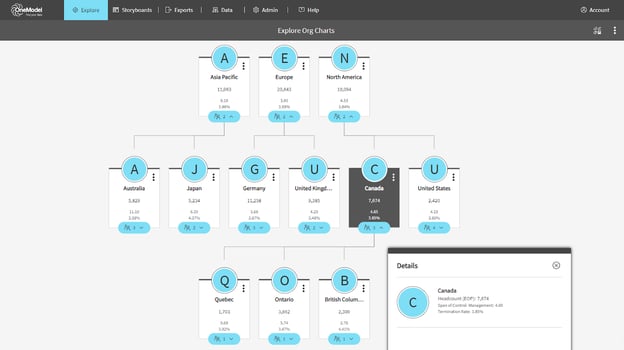
Supervisor hierarchy

You may have also heard of position hierarchy or supervisory hierarchy. This is a slight modification of the traditional Hierarchical model. You can see these a lot in support or in places within the organisation where approvals are needed.
Hierarchy establishes the connection between a superior and the subordinates within an organisation. The supervision hierarchy report exhibits the designated supervisor, presenting their immediate reports, followed by their respective reports, and so on. It encompasses the option to include the employee number, along with the name and job title of each individual, based on the chosen level of supervisory depth.
A supervisor hierarchy shows who reports to who. It refers to the structure of reporting relationships within an organisation, where supervisors are responsible for overseeing the work and performance of their subordinates. In a typical supervisor hierarchy, each supervisor has a team of employees reporting directly to them. Often for the people running those units, there is a 1:1 but that’s not always perfect. The supervisors themselves report to higher-level managers or executives, forming a chain of command. The reporting relationships follow a top-down approach — with information, instructions, and feedback flowing from higher-level supervisors to lower-level employees. This hierarchical structure ensures clear lines of authority, accountability, and efficient communication within the organisation.
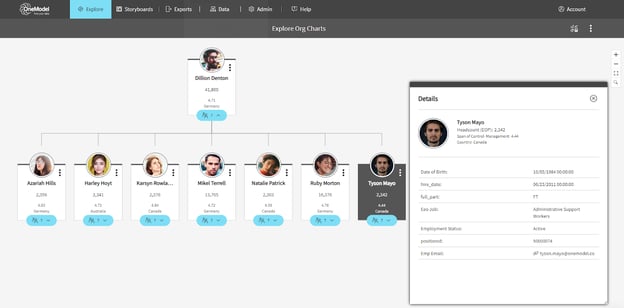
Cost centre structure hierarchy

The cost centre structure refers to the total collection of different cost types, including both fixed and variable expenses, that constitute the overall expenditures of a business. This is where the financials are run. It’s normally wrapped up in the chart of accounts.
Organisations use the cost centre structure to establish pricing and pinpoint opportunities for minimising costs. This is typically how the finance system works and who is financially accountable for the funds that they spend. This can be different from who runs the business units. Therefore, this view can often be out of alignment with the structural hierarchy. To put it simply, it’s because Finance runs the financials and HR runs the business structure.
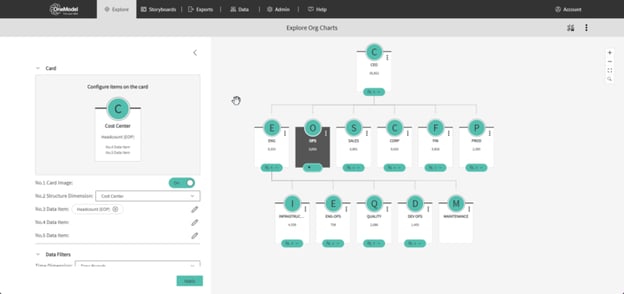
This type of view often coincides with internal company political struggles. Why? Finance likes to be in control of its space and typically doesn’t like HR veering into it. But if HR can get a cost structure into a people data view, it’s typically a good thing.
For instance, this will allow the finance team to get activity- or project-based accounting, or the total cost of the project including the hard numbers and people resources to make real assessments on the ROI of various initiatives. You can only get this view when finance and people data are combined.
Matrix structure

While not easy to visualise, this structure is really important to get right. A Matrix workforce structure generally refers to a type of organizational setup where employees are assigned to multiple reporting lines or managers simultaneously, as opposed to a traditional hierarchical structure where each employee reports to only one manager. In a matrix workforce, individuals are part of cross-functional teams and can work on various projects simultaneously, often with different sets of colleagues and supervisors.
The matrix structure is most often used in large, complex organizations that handle multiple projects simultaneously and require a high degree of collaboration across departments. It is commonly found in industries such as technology, engineering, consulting, and pharmaceuticals. Additionally, matrix structures are prevalent in multinational corporations, where teams need to coordinate and work across different geographical regions.
How does One Model help?
As you can see, getting different views of the various structures within your business can have profound impacts on your understanding. One Model creates alignment for customers, so they can pivot between those different views with the included people insights. This is really important so you can create a mapping between your financial structures and people structures to become the translator that brings that world together within the organisation.
Senior leaders typically want to see where all the money is being spent and where the people are so they can make informed decisions. So views that bring this data together make One Model incredibly valuable to our current customers. 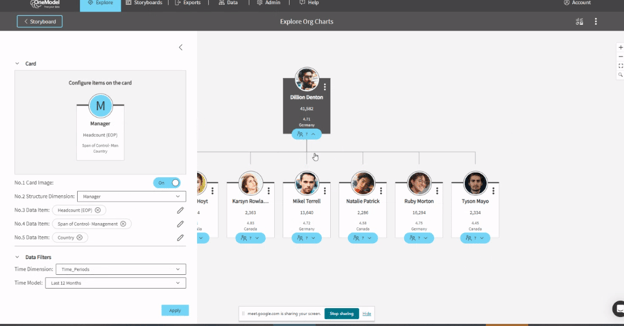
Our products empower you to change the view with a click of a button, so you get a complete view of what is actually going on. You can also cross-tabulate those views and link them together.
Want to see One Model in action? Watch this quick demo video.
How security plays into analysing workforce structures
A basic organisational breakout may not be too concerning, but once you start applying analytics to your charts to get a better understanding of how key insights or talents are distributed throughout your organisation, you run into issues. That’s why having a tool like One Model with strong roles-based security that locks sensitive information to specific roles allows you to create a public view that instantly keeps your data safe.
Security plays a crucial role in analysing workforce structures by focusing on access controls, user authentication, data protection, security awareness, incident response, vendor and third-party risk, and compliance with regulations. By incorporating security considerations into workforce analysis, organisations can identify vulnerabilities, mitigate risks, and establish a robust security foundation for their operations.
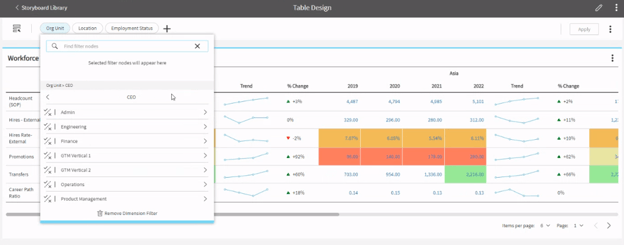
Explore the evolution of workforce models
Want to learn more about the evolution of workforce planning models over the past four decades and the key role that enterprise segmentation plays in achieving great analytics? Watch our webinar with Peter Howes, a thought leader and pioneer in the field of analytics and strategic planning models. He discusses how these structures have changed to a more strategic approach that’s focused on meeting the needs of the business.
7 benefits of incorporating people analytics into your workforce structures
Incorporating people analytics into various workforce structures can provide organisations with valuable insights and significant benefits. People analytics, also known as HR analytics or workforce analytics, involves gathering and analysing data about employees to make informed decisions and improve organisational performance.
Here are seven ways incorporating people analytics can positively impact workforce structures:
1. Data-Driven Decision-Making:
People analytics paired with workforce structure views allows organisations to base their decisions on objective data rather than relying solely on intuition or anecdotal evidence. By overlaying workforce data on top of various structures, organisations can gain insights into critical aspects such as employee performance, engagement, turnover, and productivity to quickly see where trouble resides in the business. These data-driven insights enable more informed decision-making in areas like talent acquisition, talent development, succession planning, and performance management.
2. Talent Acquisition and Retention:
People analytics inserted into your workforce structure views can highlight where your most loyal and high-performing employees exist. Seeing this allows you to identify the most effective recruitment channels, evaluate candidate profiles, and predict the likelihood of candidate success — so your team can build impactful strategies. By analysing data on employee turnover and retention, organisations can better visualise the factors influencing attrition rates and develop targeted retention strategies. It can also facilitate the identification of high-potential employees for succession planning and talent development initiatives.
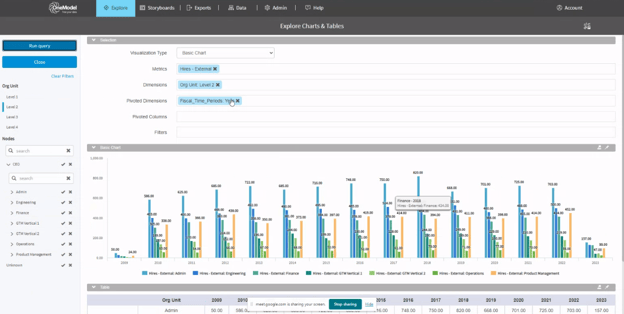
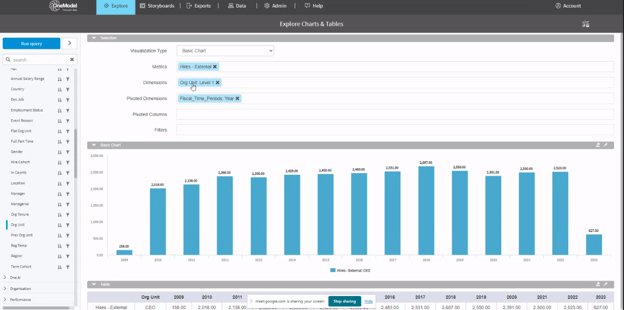
3. Performance Management:
Incorporating people analytics into an enterprise structure allows organisations to evaluate employee performance objectively and uncover great leaders and employees. By analysing performance data, organisations can identify top performers, evaluate goal attainment, and provide targeted feedback and development opportunities. People analytics can also help uncover performance patterns and trends, enabling managers to make data-driven decisions regarding promotions, rewards, and recognition.
4. Employee Engagement and Satisfaction:
Organisational structures paired with people analytics provides a map of employee engagement levels, job satisfaction, and factors that impact overall employee experience. This will quickly allow you to understand the health of various teams within your business. By analysing data from employee surveys, feedback platforms, and other sources, organisations can identify areas for improvement and take proactive measures to enhance employee engagement and satisfaction.
5. Workforce Planning and Optimisation:
Workforce hierarchy paired with people analytics plays a vital role in strategic workforce planning and optimisation. By analysing workforce data, organisations can assess their workforce's current and future needs, identify employee gaps, and develop strategies for workforce development and succession planning. People analytics can also help optimise workforce structures by identifying areas of organisational inefficiency or redundancy, enabling resource allocation and restructuring initiatives.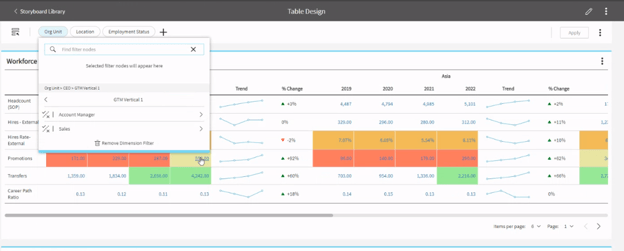
6. Diversity and Inclusion:
Where do your DE&I community members reside in your org? Which areas of the business are most diverse? Incorporating people analytics into your workforce structure can support diversity and inclusion efforts by analysing demographic data. This allows organisations to assess representation, identify potential biases, and implement targeted diversity and inclusion initiatives. 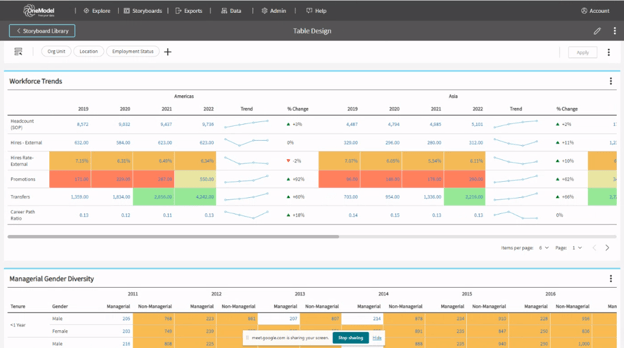
7. Predictive Analytics and Future Insights:
People analytics enables organisations to leverage predictive analytics to forecast future trends and outcomes related to the workforce. By analysing historical data, organisations can identify patterns and make predictions about attrition rates, talent shortages, skill requirements, and workforce needs. These insights allow proactive planning and decision-making, ensuring the organisation is prepared for future workforce challenges.

In summary, workforce structures already exist in your organisation, the question is can you use them to better understand your business and create efficiencies? If you can’t, or if the process is a major project for your HR team, then you need to consider people analytics software like One Model that empowers you to transform how your leaders make decisions.
We’d love to show you how One Model can help your organisation make better talent decisions.
Request a demo today!

